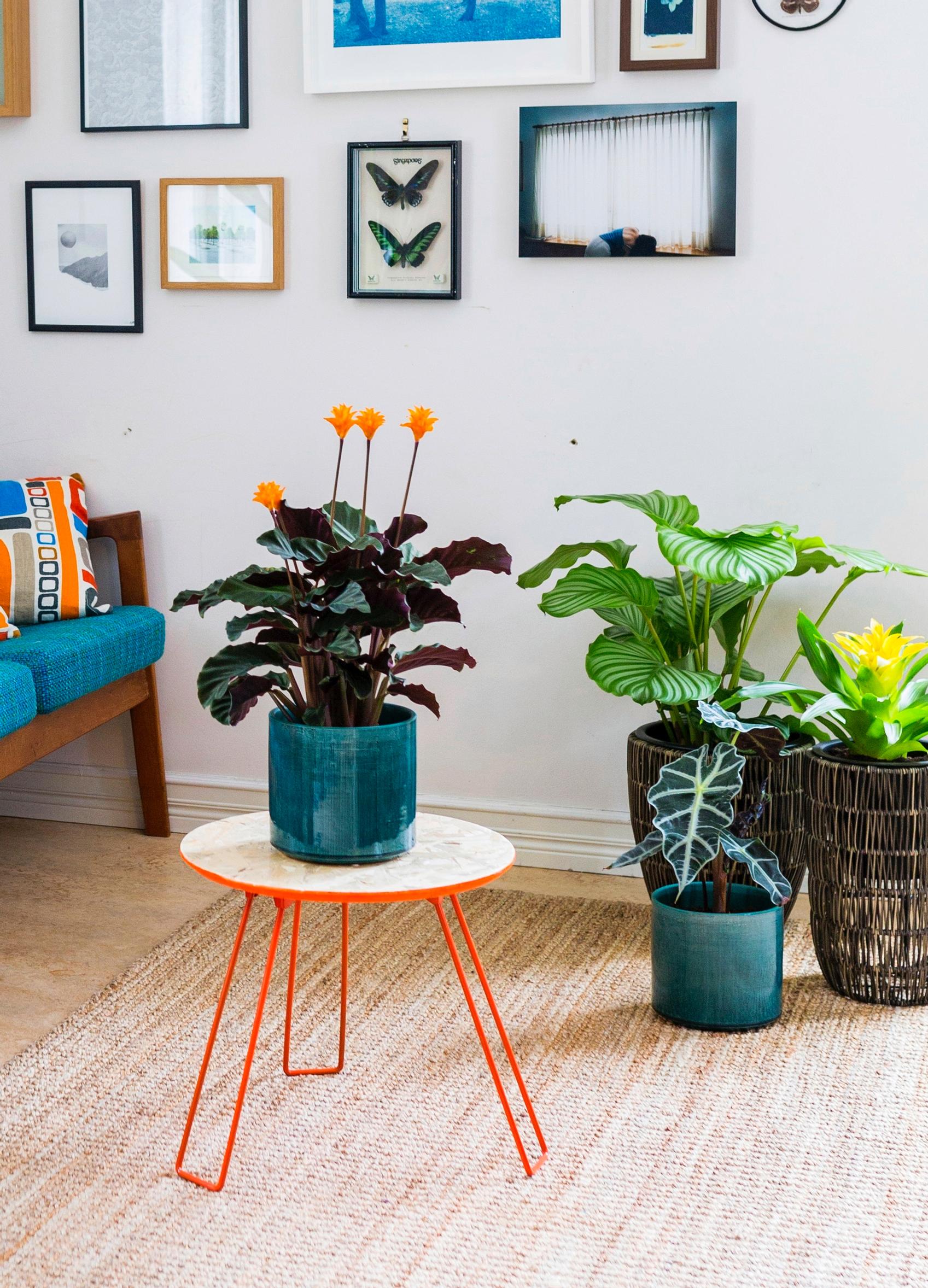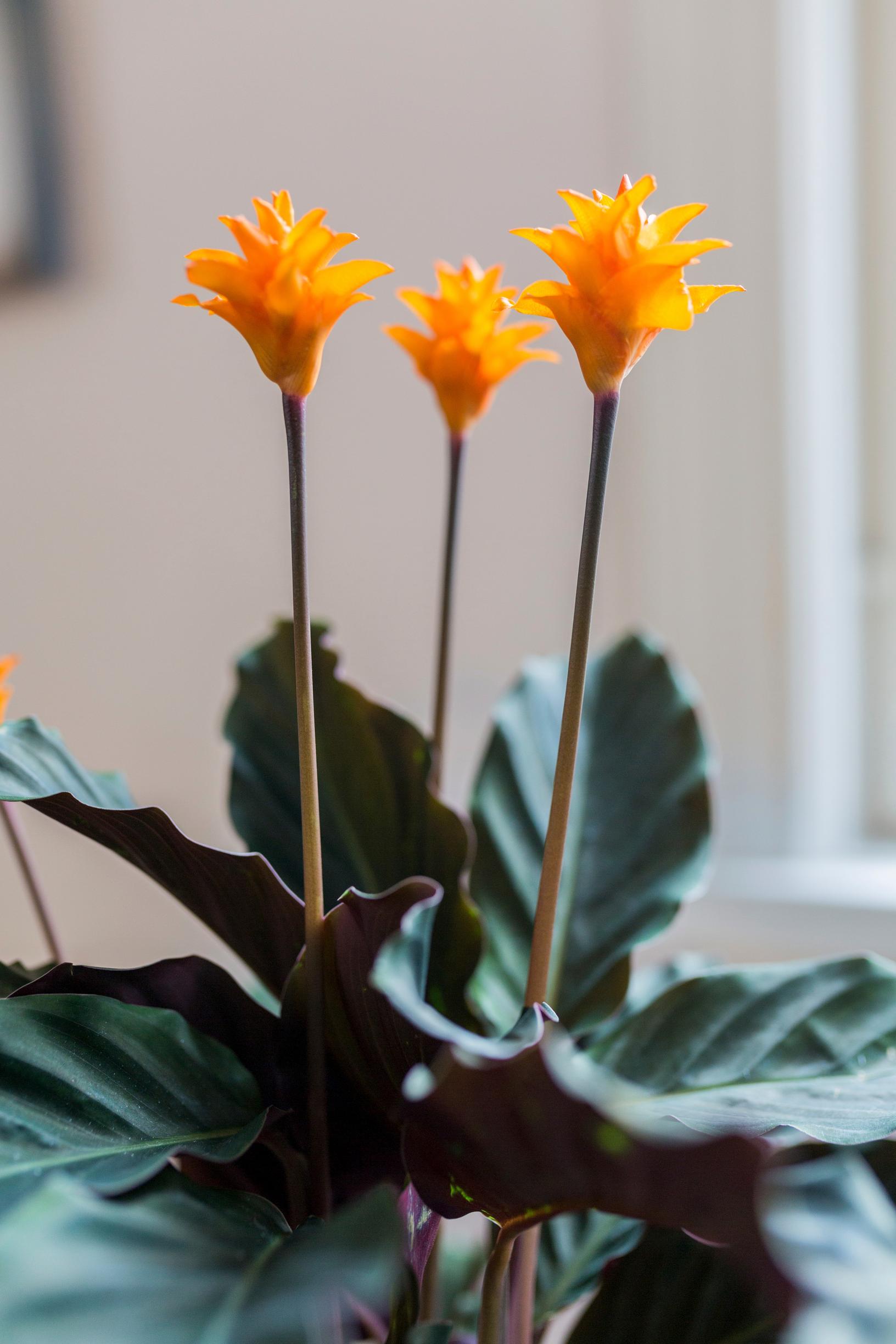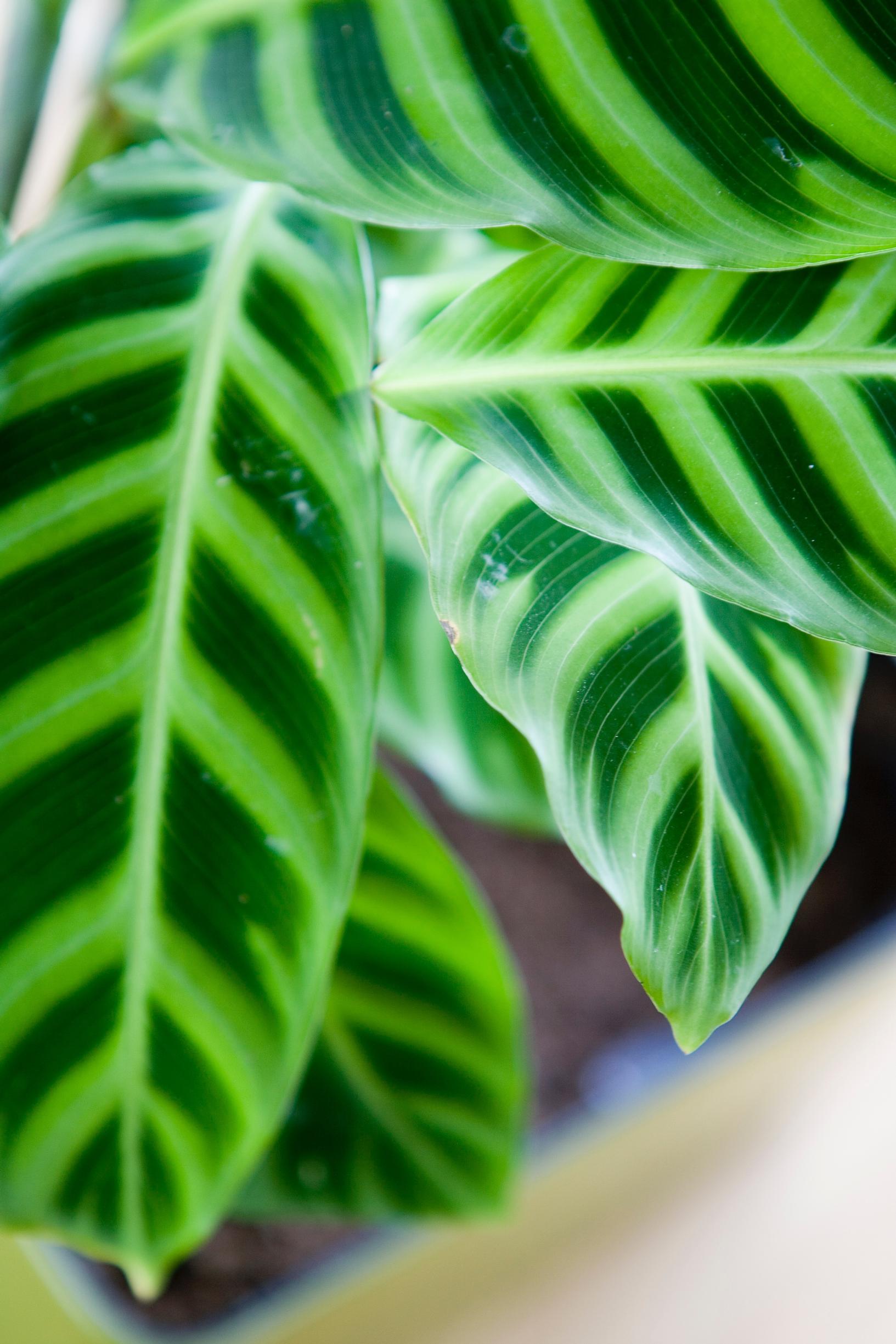
Calatheas: popular houseplants with varieties for every taste—see how to grow and care for them
Calatheas are richly hued houseplants that fill your home with vibrant shades of green. Their leaves can be stripey, spotty, or variegated. Get to know calatheas and be amazed by the range of varieties!
Calatheas (Calathea) are a group of houseplants mainly grown for their decorative foliage. They can also bloom in pots, but the flowers on the spadix are small and unassuming.
Unlike other calatheas, the saffron-colored calathea (C. crocata) puts on a spectacular show when it flowers. The flower stems rise above the leaves, and the bracts are a lovely orange-yellow.


Calatheas belong to the Marantaceae plant family, which also includes the prayer plants (Maranta) and stromanthe (Stromanthe). These three genera are easily mixed up.
Calatheas naturally grow in Central and South America and in the West Indies. They thrive in humid air, sheltered from drafts.
A calathea brought home from the store may wilt, because transitioning from greenhouse conditions to drier indoor air can be a shock. Spraying, misting, and increasing air humidity in all possible ways will help a calathea adjust. You can also set out water containers near your calatheas, as evaporating water increases moisture in the air.

Calatheas: growing and care
Temperature
Calatheas come from warm climates, so a normal indoor temperature is ideal. Keep them out of any drafts.
Light conditions
A bright or partly shaded spot is perfect for calatheas. Direct sunlight can easily scorch the leaves, so it’s best to avoid it. If you place your calathea on a south-facing window, make sure the sun won’t singe its leaves. Abundant light keeps the leaf patterns looking their best.
Watering and fertilizing calathea
Consistency is key when watering a calathea. The soil should remain consistently moist, but not soaked. Water thoroughly, then let the surface dry a bit before the next watering. Empty out any water that drains into the saucer. Especially in winter, make sure you don’t overwater.
Begin fertilizing in spring as light increases, around March or April. Give fertilizer every three to four weeks until August.
Repotting calathea
Plant your calathea in regular potting soil. Place a generous layer of lightweight clay pebbles in the bottom for drainage.
If it’s thriving, your calathea may grow so much that you need to repot it every spring if the pot becomes too small.
Propagating calathea
You can propagate calatheas during the spring repotting by dividing the rootstock.
Other care
Spray and mist your calathea often. Wipe dust off the leaves with a damp cloth.


Different calathea varieties:
- furry feather calathea Calathea rufibarba
- silver variegated calathea C. picturata ‘Argentea’
- rose-painted calathea C. roseopicta
- rattlesnake plant C. lancifolia (insignis)
- round-leaved calathea C. orbifolia
- Zebra calathea C. zebrina
- saffron-colored calathea C. crocata
- peacock plant C. makoyana
- calathea white star C. majestica


